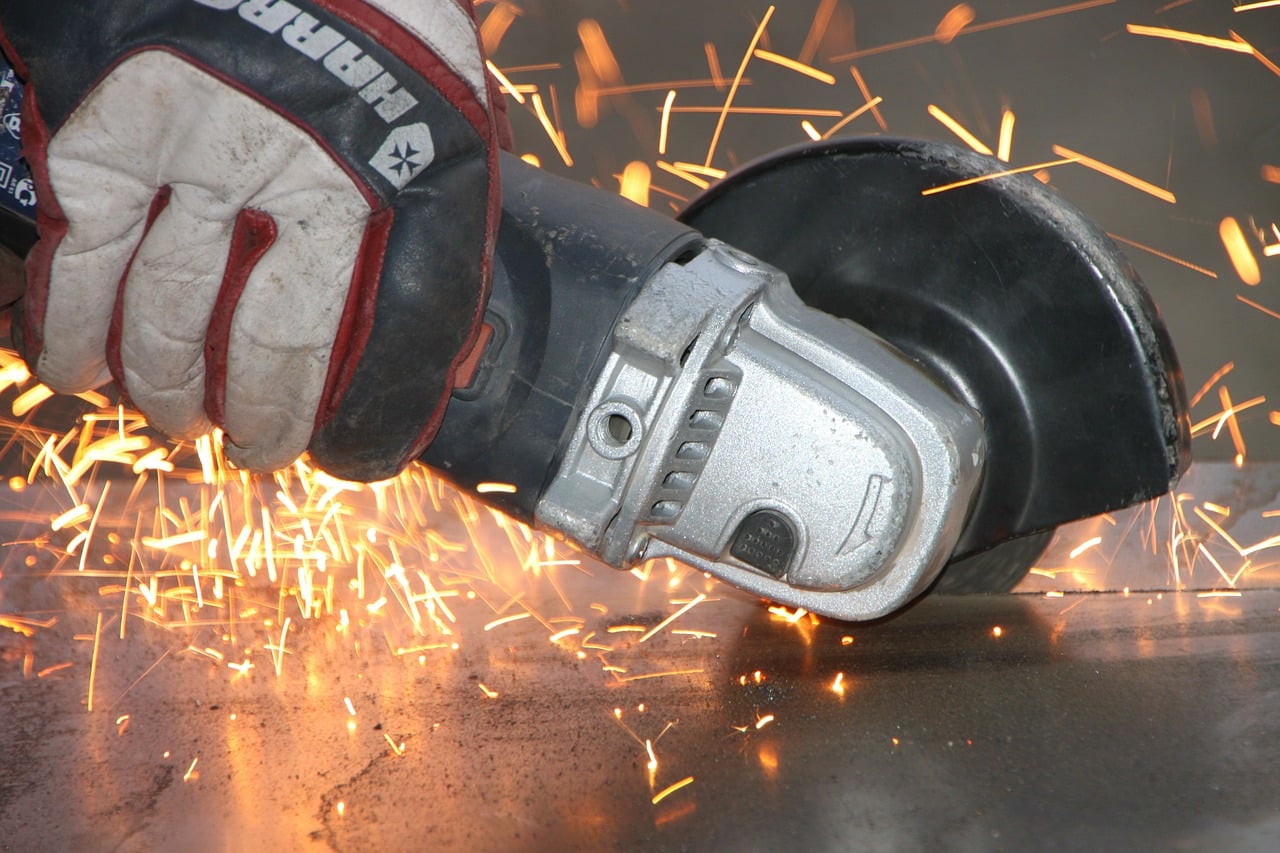An angle grinder is essential for any home DIYer or professional craftsman. It is versatile and can be used for various jobs, from cutting through metal or concrete to polishing surfaces. Choosing the right angle grinder for the job can be daunting as many models and features are available. This article will provide tips for selecting the best angle grinder for the job, plus information about the different types and the factors to consider when shopping.
What is an Angle Grinder?
An angle grinder is a powerful power tool used for numerous applications, such as grinding, cutting, and polishing. It has a spinning disc usually made of aluminum oxide, ceramic, or boron carbide. The most common sizes range from 4 to 9 inches in diameter, but some grinders can be as large as 12 inches. Depending on the size, they can be used for various jobs, from cutting through metal to grinding concrete. The wheel size and speed can also be adjusted depending on the job.
Choosing the Right Angle Grinder for the Job
Now that you know what an angle grinder is and why you might need one, it’s time to choose the right one for the job. The type of angle grinder you need depends on the job. Before you buy one, consider the following factors.
First, consider the size of the angle grinder’s disc. The disc’s size will determine what you can do. Smaller discs are best for smaller jobs, while larger discs are better for larger jobs.
Next, consider the angle grinder’s power. The more powerful the grinder, the more power it will have to cut through tough materials. If you’re working on a large project, you may want to invest in a more powerful angle grinder.
The next factor is speed. Angle grinders come with different speed settings; if you’re working on a project that requires a lot of grinding, you may want to invest in a model with higher speed settings.
Finally, consider the price. Angle grinders come in a wide range of prices, so find one that fits your budget. While it’s tempting to buy a cheaper model to save money, you may find that it doesn’t have the power or speed you need for the job.
Selecting the right angle grinder for the job is an important decision, so consider the above factors before buying, or visit GrinderPowerTool.com for more information.
Types of Angle Grinders
There are several types to choose from when finding the right angle grinder for the job. You may want an electric angle grinder powered by an AC or DC motor for light-duty jobs. Electric grinders typically have lower rotational speeds and are more suitable for less-demanding jobs. For tougher jobs, a pneumatic model is the best choice. These are powered by compressed air and are used in industrial applications. Lastly, cordless angle grinders are becoming increasingly popular for their convenience as a rechargeable battery powers them.
Factors to Consider When Choosing an Angle Grinder
There are several factors to consider when choosing an angle grinder. Knowing what you will use the angle grinder for and what features are most important will help you make an informed decision.
The first factor is the size of the angle grinder. Angle grinders come in various sizes, ranging from small handheld models to large stationary units. Smaller grinders are best suited for light-duty tasks like removing paint or rust from metal surfaces, while larger grinders are better for cutting metal or concrete.
The second factor is the type of motor. Angle grinders have either AC or DC motors. AC motors are usually more powerful and require more maintenance, while DC motors are quieter and more efficient. It’s crucial to choose a motor that is powerful enough for the job you are doing.
The third factor is the motor’s speed. Angle grinders have variable speed settings, ranging from low to high. The motor’s speed will determine the rate at which it can grind or cut. A motor with a higher speed setting is ideal for tougher jobs, while a lower speed setting is better for lighter tasks.
The fourth factor is the disc’s material. Angle grinders come with various discs, including metal, stone, and plastic. Each material is suited for different types of jobs. For example, metal discs are best for cutting metal, while stone discs are best for grinding concrete. Plastic discs are best for polishing surfaces.
Finally, the fifth factor is the price. Angle grinders can vary significantly in price, ranging from basic to more expensive models. It’s essential to choose a model that fits your budget and needs.
By considering the size, motor type, speed, disc material, and price of an angle grinder, you can make an informed decision and get the best tool for the job.
Conclusion
iI’s essential to consider the job you need it for and the features when choosing an angle grinder. Consider the grinder’s size, power, and features of the angle grinder and make sure it’s the right choice for the job. Look for a quality tool from a reputable manufacturer. With a quality angle grinder, you’ll know you can do the job right and safely. So, before you buy, research and find the angle grinder that best meets your needs.








